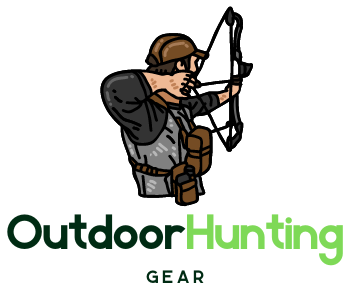What gear do you need for turkey hunting?
Since turkeys aren’t deer, bowhunting them is different from bowhunting deer. Remember the three p’s (plan, pack, and perform) to ensure you carry the turkey hunt’s game changers, even if the two hunts require identical equipment.
Think about your destination, what you’ll need, and how you might save money, time, and effort while making your travel plans. Consider this when deciding what to bring on your trip. You should pack all the gear you’ll need for the hunt.
Turkey hunters should spread out their purchases. Put together a spending plan and stick to it. Spend a little extra on a turkey vest, comfortable chair, and other necessities the first year.
Get some good hiking boots and knee-high rubber boots for the second year. Invest in a wet coat and sturdy binoculars in Year three.
Use the following materials to help you compile a packing list. Carry on all that is specified, though you may prioritize certain goods over others. Not everything on this list is necessary for a successful turkey hunt, but it is worth your time to consider the many choices.
Turkey Hunting Gear Packing List
Hunting License
License Don’t forget it at home, and make plenty of copies. Keep a copy of your license in your car in case you misplace your original one.
Bow or Gun
Bow or gun? Choose between using a bow and arrow or a firearm to hunt turkeys. Get yourself a bow, some arrows, and some broadheads, or a shotgun, a choke tube, and some ammo. Bring a carrying sling if you intend to use a bow or shotgun.
Camouflage Hunting Clothing
Camouflage gear: bring thermals if it’s going to be chilly. Socks, pants, and both long and short-sleeved shirts are essentials that you should never be without. Put on a few thin layers to adjust the temperature as needed.
Hat, gloves, facemask, and other accessories
Turkeys have incredible eyesight, therefore it’s important to always wear concealing gear like a camouflage helmet, gloves, facemask, and neck gaiter when hunting.
Hunting Boots
If your feet are chilly and unpleasant, you’re done,” referring to the boots. Put on a pair of waterproof, insulated boots. Boots that are resistant to snakebites are common in the South, whereas insulated boots are a must in the North.
Water
In order to maintain your body’s optimal level of hydration, you should drink water regularly. Water bottles are a must, so make sure you pack a few and leave some in the car.
Snacks
You’ll burn calories just driving and talking, so stock up on snacks. Bring snacks like apples, carrots, crackers, sandwiches, and protein bars to keep your energy up.
Chair or cushion
Turkey hunters need a cushion or chair to sit steady in a blind or against a tree. Cushions, backrests, and lounge chairs make sitting for extended periods more bearable.
Turkey calls
You can use a box call, a slate call, a diaphragm call, or all three to call a turkey. Be prepared for the season by practicing your calls ahead of time.
Turkey Decoys
Look for a decoy that won’t weigh you down and can be stored effortlessly. Jake and hen, or any other mating pair, set up convincing dioramas to entice rival toms.
Hunting Knife
Having a sharp knife on hand is essential for field-dressing your bird.
Map and compass
Always have a map and compass close by to help you make your way and locate the best sites.
Bug protection
Insect repellent: ticks and mosquitoes may ruin even the best of hunts. Get rid of these pests with a Thermacell or insect spray with Permethrin.
Toilet paper
Put away some toilet paper, because you never know when you’ll need to use it.
Flashlight
A flashlight is a useful tool for getting around in the woods after dark.
First-aid kit
Matches, bandages, latex gloves, and other first aid necessities are required contents of each survival kit.
Related hunting content from our blog:
- Top 10 Best Whitetail States for Trophy Bucks This Deer Hunting Season!
- Top 7 Best Hunting Caliber for Rifle Hunters, Wild Game & Range!
- Top 7 Best Deer Rifles for Hunting: Ultimate Whitetail Deer Hunter Guide!
- Top 10 Best Deer Calls for Hunting Trophy Whitetail Bucks & Doe!
- Best Camo for Deer Hunting: Top 10 Camouflage Patterns for Whitetail Deer Hunters!
